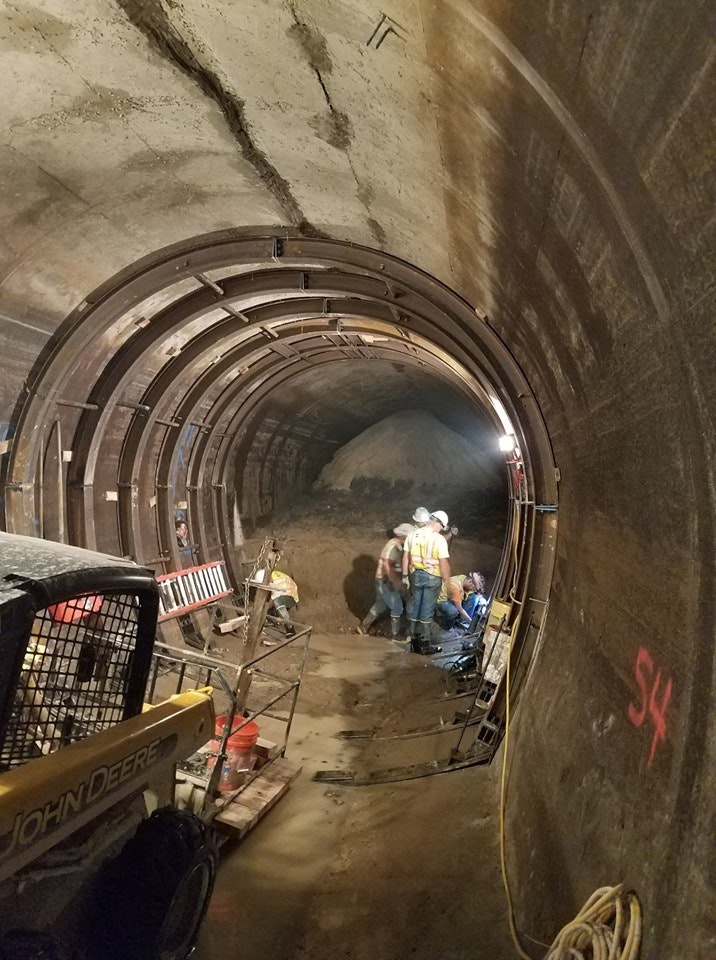By Ike Fredregill, Cowboy State Daily
Out-of-state contractors are racing to complete repairs on a collapsed irrigation tunnel in Goshen County as governmental agencies analyze the best ways to help affected farmers.
“We’re up there seven days a week trying to get it done as quick as we can,” Goshen Irrigation District Manager Rob Posten said. “The farmers want water yesterday, and we want to give it to them.”
The problems started July 17 when an irrigation tunnel collapsed in Goshen County, cutting irrigation water off from more than 100,000 acres of farmland in Wyoming and Nebraska at the height of the hot and dry season.
Both Wyoming Gov. Mark Gordon and Nebraska Gov. Pete Ricketts signed declarations of emergency in response to the collapse.
“Our office is continuing to analyze ways to assist and that might include some potential low-interest loan programs and looking at funding sources that might be available to the irrigation district,” said Michael Pearlman, Gordon’s communications director.
The Wyoming Department of Transportation, Wyoming Department of Homeland Security and Wyoming Army National Guard also visited the site of the collapse to determine possible ways Wyoming could provide aid, Pearlman added.
Built by the Bureau of Reclamation in 1917 as a part of the North Platte Project, the tunnel is 14 feet in diameter and 2,200 feet long and is located about a mile south of Fort Laramie.
Farm Services of America Insurance Officer Vanessa Reishus said the cause of the collapse has not been determined and doing so could be a drawn out process.
“I’m sure the risk management agency is waiting for the engineers to give them a cause for collapse,” Reishus said. “Generally, these things take a really long time.”
If the U.S. Army Corps of Engineers decides the cause was anything other natural, crop insurance won’t cover the farmers’ losses.
At the canal, about 40 workers from the irrigation district and construction crews from St. Louis, Missouri, and Nebraska are trying to repair the canal as quickly as possible, Posten said.
“I talk to the tunnel guys every day,” he said. “As the ditch crew removes dirt from the top of the tunnel, the tunnel crew is setting steel brace ribs and sealing the breach.”
Recent rains likely helped farmers weather the disaster, but slowed progress on repairs.
“The tunnel crew probably spent half a day pumping water out of there after the big rain storm,” Posten explained. “It didn’t hinder them too much. We’ll take rain every day if we can get it.”
Estimating when the tunnel will be operational again is difficult, but Posten said he’s pushing to get water back to the crops in less than a month.
“I’d like to have water running in 2-3 weeks,” he said. “That’s the goal.”





